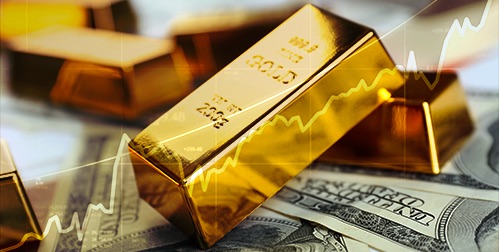Gold Demand Rises
Gold remains the “go to” asset for investors looking to protect their purchasing power and wealth during uncertain times. The current market is no exception. Experts predict the price of gold to hit an all-time high of $2,200 an ounce.1 This is due to several factors, including a tightening money supply, slowing interest rate hikes, and central bank demand.
Investors are turning to gold to protect their purchasing power. Central banks are tightening the money supply. They are trying to undo the massive cash injection that was necessary during the Covid-19 pandemic. Since 2019, the Federal Reserve has increased the money supply by 40%. Tightening the money supply has the same impact on consumers as rising prices. As the money supply shrinks, the price for goods goes up. This reduces the purchasing power of consumers and drags down economic growth.
Investors are counting on the Fed to stop increasing interest rates if they harm the economy too much. Fed Chair Powell has stated that they will do whatever it takes to contain inflation. Wall Street thinks it is a safer bet to follow what the Fed does, not what it says. And they see a steady trend in reduced rate increases. A slowing of interest rate increases (and eventual cuts) will raise the price of gold. Falling rates weaken the dollar and US Treasury yields – both of which result in higher gold prices. The weaker dollar also makes it cheaper to buy gold in other currencies, boosting overall gold demand.
National Debt Pushing Up Prices
The national debt can also factor into putting the brakes on interest rates. Rising interest rates are increasing the cost of servicing the national debt. The debt ceiling was hit in January. After breaking a record $31 trillion, it could become untenable and pressure the Fed to relent.
The last debt ceiling crisis in 2011 saw gold hit a record high that wasn’t broken until 2020. As the June debt ceiling deadline approaches, gold could peak again. Investors should be aware that gold prices dropped back down after the last debt crisis was resolved. This time could be no different. Gold is still the asset that many turn to during unstable times because it is outside of the system. JPMorgan recommends holding gold. They said, “the potential for a disorderly debt ceiling episode adds another reason for global investors to rebalance their portfolios across asset classes, including currencies and precious metals like the Japanese yen, the Swiss franc, and gold.”2
Central Bank Gold Demand
Central banks are contributing to high gold prices beyond setting interest rates. The World Gold Council stated that the central bank gold buying spree is not over. They are largely responsible for pushing gold up to $1,924 per ounce in January. China alone added an extra 15 tons of gold to its reserves. This is the 13th successive year of net purchases and the largest level of annual demand since 1950.3
Several interconnected factors are pushing up the price of gold. Now is the time to investigate precious metals to preserve your purchasing power. Analysts at Degussa Bank said, “If you are wondering if the current gold price is a good buy, I would say that in the long-term, gold is still cheap given the current conditions.”4 The Gold IRA from American Hartford Gold is a remedy to economic uncertainty. Contact us today to learn more.






